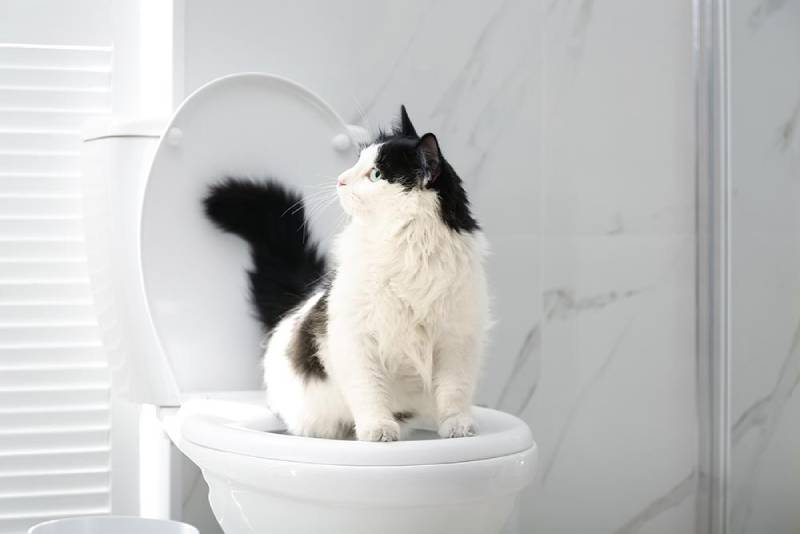We have found this great article relating to How to Dispose of Cat Poop and Litter Without Plastic Bags listed below on the net and reckoned it made sense to discuss it with you on this page.

Intro
As cat owners, it's essential to be mindful of exactly how we dispose of our feline buddies' waste. While it might appear hassle-free to flush pet cat poop down the bathroom, this technique can have destructive consequences for both the atmosphere and human health and wellness.
Environmental Impact
Purging feline poop presents harmful pathogens and bloodsuckers into the water supply, posturing a considerable risk to water environments. These contaminants can negatively impact marine life and concession water top quality.
Wellness Risks
Along with environmental concerns, flushing pet cat waste can likewise pose health and wellness risks to people. Feline feces might include Toxoplasma gondii, a bloodsucker that can cause toxoplasmosis-- a potentially severe health problem, specifically for pregnant ladies and individuals with weakened body immune systems.
Alternatives to Flushing
Luckily, there are much safer and more accountable ways to throw away pet cat poop. Think about the following options:
1. Scoop and Dispose in Trash
The most typical technique of disposing of pet cat poop is to scoop it into a naturally degradable bag and toss it in the trash. Be sure to use a specialized trash inside story and dispose of the waste immediately.
2. Use Biodegradable Litter
Select naturally degradable pet cat litter made from products such as corn or wheat. These clutters are eco-friendly and can be securely thrown away in the garbage.
3. Bury in the Yard
If you have a backyard, think about hiding feline waste in a marked area away from vegetable gardens and water resources. Be sure to dig deep enough to avoid contamination of groundwater.
4. Install a Pet Waste Disposal System
Purchase a pet garbage disposal system particularly created for feline waste. These systems use enzymes to break down the waste, minimizing odor and ecological influence.
Conclusion
Accountable family pet possession extends beyond supplying food and shelter-- it also entails correct waste monitoring. By avoiding flushing pet cat poop down the bathroom and going with alternative disposal techniques, we can minimize our ecological impact and shield human wellness.
Why You Should NEVER Flush Cat Poop (and/or Litter) Down Your Toilet
The Problem with Litter
The main function of litter is to solidify and adhere to your cat’s waste. While this makes litter excellent for collecting cat poop and urine, it’s also the exact property that makes it a nightmare when flushed down the toilet.
Cat litter can and will clog pipes. There is non-clumping litter, but it’s still quite heavy and can build up in pipes. This is true even of supposed “flushable litter.”
The problems only compound when the litter is already clumped into cat waste. Toilet paper is among the more flushable things, and even too much of that will clog a toilet.
The Problem with Cat Poop
Sewers and septic systems are designed with human waste in mind. The microbes that help break down human waste don’t work on cat waste. Additionally, cat poop plays host to the parasite Toxoplasma gondii.
When flushed, this parasite can enter the environment in places it was never meant to, posing a risk to pregnant women, their unborn children, and other people with compromised immune systems. While it might not seem possible, flushing cat poop can indeed introduce this parasite to the public water supply.
These reasons are why, even if you’ve trained your cat to go on the toilet and flush, which is possible, it’s still not a good idea. Also, pregnant women and the immunocompromised shouldn’t change litter, either.
How to Handle Litter
The best way to handle litter is to simply put it in a plastic bag and place it in the trash. Avoiding environmental risks and possible plumbing damage is worth the extra effort.
You can also invest in devices that seal away your cat’s waste in a separate compartment, so you don’t have to change the litter nearly as often. They’re also safer for pet owners because they limit the possibility of Toxoplasma gondii exposure.
Disposing of litter the old-fashioned way will ensure you won’t have to worry about any issues that flushing the waste can potentially cause.
Take Care of Clogged Pipes with Stephens Plumbing, Heating & Air Conditioning
The reasons you should never flush cat poop down your toilet are numerous, but sometimes the inevitable happens despite your best efforts.
Stephens Plumbing, Heating & Air Conditioning is ready to help if you’re experiencing litter-blocked plumbing. Whether you need us in an emergency or want to schedule regular maintenance, we’re here for you.
https://www.stephensplumbing.net/bathroom-plumbing/never-flush-cat-poop-down-your-toilet/

Do you appreciate more info about Can You Flush Cat Poo or Litter Down the Toilet?? Place feedback directly below. We'd be interested to listen to your thoughts about this article. We hope to see you back again in the future. Liked our piece of writing? Please share it. Let another person locate it. Thank you for your time invested reading it.
More Details
Comments on “Dangers of Disposing Cat Poop in Your Toilet - Preventive Measures”